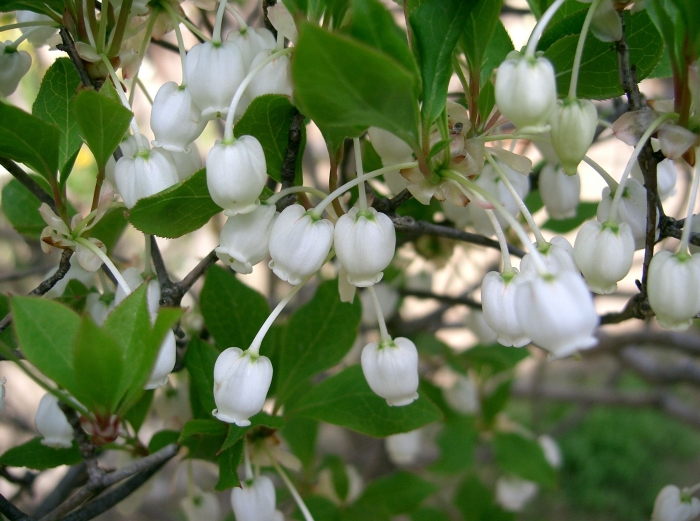White Enkianthus
(Enkianthus perulatus)
White Enkianthus (Enkianthus perulatus)
/
/

KENPEI
CC BY-SA 3.0
Image By:
KENPEI
Recorded By:
Copyright:
CC BY-SA 3.0
Copyright Notice:
Photo by: KENPEI | License Type: CC BY-SA 3.0 | License URL: http://creativecommons.org/licenses/by-sa/3.0/ | Uploader: KENPEI | Publisher: Wikimedia Commons | Title: Enkianthus_perulatus3.jpg | Notes: {{Information |Description=''Ephedra aspera'', Pima Wash Trail, South Mountain, Phoenix, Arizona |Source=self-made |Date=22 Mar 2008 |Author= [[User:Miwasatoshi|Miwasatoshi]] |Permission= |other_versions= }} |





























Estimated Native Range
Summary
Enkianthus perulatus, commonly known as White Enkianthus, is a deciduous shrub native to the mountainous regions of East Asia, particularly Japan and Taiwan. It typically reaches a height and width of 2 meters (6 feet 7 inches). This plant features pendent umbels of pure white, bell-shaped flowers in late spring, which are moderately showy and attract pollinators. In the fall, it offers a stunning display of brilliant red and yellow foliage. The bark is smooth and reddish-brown, adding winter interest.
White Enkianthus is valued for its striking autumn coloration and elegant flowers. It is suitable for woodland gardens, mixed borders, and as a specimen plant in residential landscapes. It prefers acidic, well-drained soil and can tolerate part shade, making it a good choice for dappled light conditions under larger trees. While it requires medium amounts of water, it is relatively low maintenance once established. This plant has earned the Royal Horticultural Society’s Award of Garden Merit, indicating its exceptional qualities in garden settings. Potential problems include aphids and vine weevil, though these are generally not severe. It is not known for aggressive roots or significant disease issues.CC BY-SA 4.0
White Enkianthus is valued for its striking autumn coloration and elegant flowers. It is suitable for woodland gardens, mixed borders, and as a specimen plant in residential landscapes. It prefers acidic, well-drained soil and can tolerate part shade, making it a good choice for dappled light conditions under larger trees. While it requires medium amounts of water, it is relatively low maintenance once established. This plant has earned the Royal Horticultural Society’s Award of Garden Merit, indicating its exceptional qualities in garden settings. Potential problems include aphids and vine weevil, though these are generally not severe. It is not known for aggressive roots or significant disease issues.CC BY-SA 4.0
Plant Description
- Plant Type: Shrub
- Height: 3-6 feet
- Width: 3-6 feet
- Growth Rate: Moderate
- Flower Color: White
- Flowering Season: Spring
- Leaf Retention: Deciduous
Growth Requirements
- Sun: Full Sun, Part Shade
- Water: Medium
- Drainage: Medium
Common Uses
Bee Garden, Groundcover, Low Maintenance
Natural Habitat
native to the mountainous regions of East Asia, particularly Japan and Taiwan
Other Names
Common Names: Dodan-Tsutsuji, 臺灣吊鐘花
Scientific Names: , Enkianthus perulatus, Enkianthus taiwanianus, Andromeda perulata, Enkianthus perulatus subsp. taiwanianus, Enkianthus perulatus var. taiwanianus,
GBIF Accepted Name: Enkianthus perulatus (Miq.) C.K.Schneid.